Fabien Geyer
Explainable AI for UAV Mobility Management: A Deep Q-Network Approach for Handover Minimization
Apr 25, 2025Abstract:The integration of unmanned aerial vehicles (UAVs) into cellular networks presents significant mobility management challenges, primarily due to frequent handovers caused by probabilistic line-of-sight conditions with multiple ground base stations (BSs). To tackle these challenges, reinforcement learning (RL)-based methods, particularly deep Q-networks (DQN), have been employed to optimize handover decisions dynamically. However, a major drawback of these learning-based approaches is their black-box nature, which limits interpretability in the decision-making process. This paper introduces an explainable AI (XAI) framework that incorporates Shapley Additive Explanations (SHAP) to provide deeper insights into how various state parameters influence handover decisions in a DQN-based mobility management system. By quantifying the impact of key features such as reference signal received power (RSRP), reference signal received quality (RSRQ), buffer status, and UAV position, our approach enhances the interpretability and reliability of RL-based handover solutions. To validate and compare our framework, we utilize real-world network performance data collected from UAV flight trials. Simulation results show that our method provides intuitive explanations for policy decisions, effectively bridging the gap between AI-driven models and human decision-makers.
Efficient and Mathematically Robust Operations for Certified Neural Networks Inference
Jan 16, 2024Abstract:In recent years, machine learning (ML) and neural networks (NNs) have gained widespread use and attention across various domains, particularly in transportation for achieving autonomy, including the emergence of flying taxis for urban air mobility (UAM). However, concerns about certification have come up, compelling the development of standardized processes encompassing the entire ML and NN pipeline. This paper delves into the inference stage and the requisite hardware, highlighting the challenges associated with IEEE 754 floating-point arithmetic and proposing alternative number representations. By evaluating diverse summation and dot product algorithms, we aim to mitigate issues related to non-associativity. Additionally, our exploration of fixed-point arithmetic reveals its advantages over floating-point methods, demonstrating significant hardware efficiencies. Employing an empirical approach, we ascertain the optimal bit-width necessary to attain an acceptable level of accuracy, considering the inherent complexity of bit-width optimization.
Passive Sensing and Localization in an Aircraft Cabin Using a Wireless Communication Network
Dec 18, 2023Abstract:Advances in wireless localization techniques aiming to exploit context-dependent data has been leading to a growing interest in services able of localizing or tracking targets inside buildings with high accuracy and precision. Hence, the demand for indoor localization services has become a key prerequisite in some markets, such as in the aviation sector. In this context, we propose a system to passively localize and track passenger movements inside the cabin of an aircraft in a privacy preserving way using existing communication networks such as Wi-Fi or 5G. The estimated passenger positions can be used for various automation tasks such as measurement of passenger behavior during boarding. The paper describes a novel wireless localization system, based on Artificial Neural Networks, which passively senses the location of passengers. The position estimation is based on the observation of wireless communication signals that are already present in the environment. In this context, "passive" means that no additional devices are needed for the passengers. Experimental results show that the proposed system is able to achieve an average accuracy of 12 cm in a challenging environment like an aircraft cabin. This accuracy seems sufficient to control passenger separation.
Precise Onboard Aircraft Cabin Localization using UWB and ML
Apr 06, 2022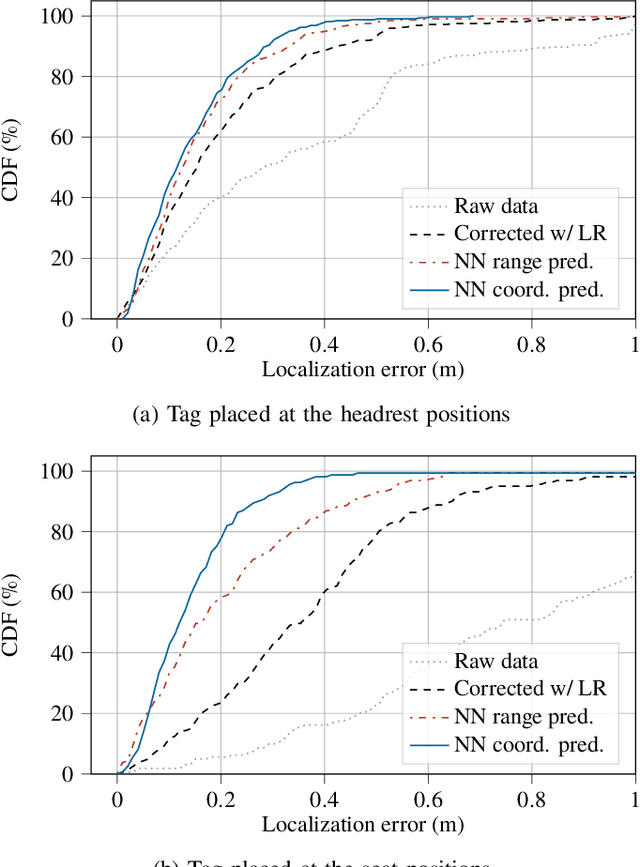
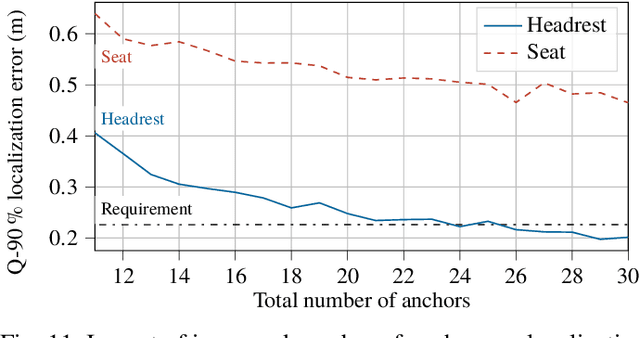
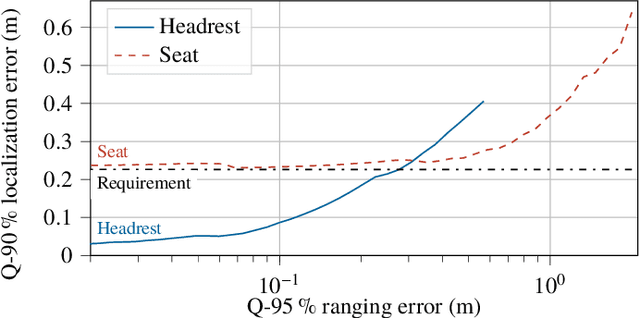
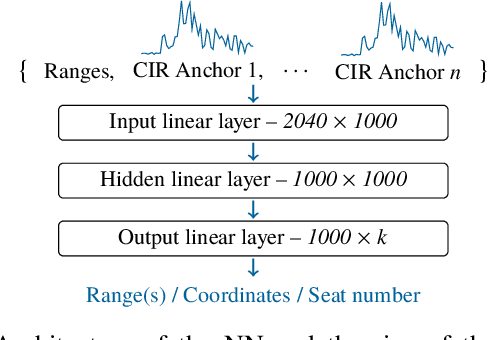
Abstract:Precise indoor positioning systems (IPSs) are key to perform a set of tasks more efficiently during aircraft production, operation and maintenance. For instance, IPSs can overcome the tedious task of configuring (wireless) sensor nodes in an aircraft cabin. Although various solutions based on technologies of established consumer goods, e.g., Bluetooth or WiFi, have been proposed and tested, the published accuracy results fail to make these technologies relevant for practical use cases. This stems from the challenging environments for positioning, especially in aircraft cabins, which is mainly due to the geometries, many obstacles, and highly reflective materials. To address these issues, we propose to evaluate in this work an Ultra-Wideband (UWB)-based IPS via a measurement campaign performed in a real aircraft cabin. We first illustrate the difficulties that an IPS faces in an aircraft cabin, by studying the signal propagation effects which were measured. We then investigate the ranging and localization accuracies of our IPS. Finally, we also introduce various methods based on machine learning (ML) for correcting the ranging measurements and demonstrate that we are able to localize a node with respect to an aircraft seat with a measured likelihood of 97%.
Network Calculus with Flow Prolongation -- A Feedforward FIFO Analysis enabled by ML
Feb 07, 2022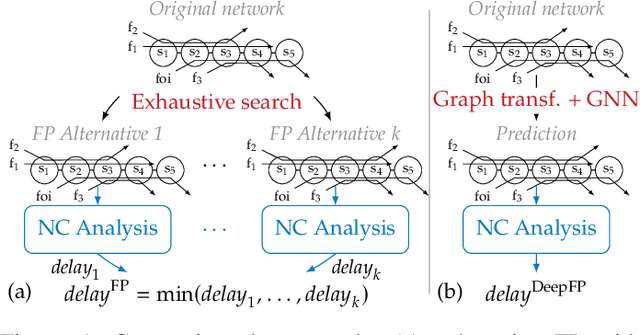

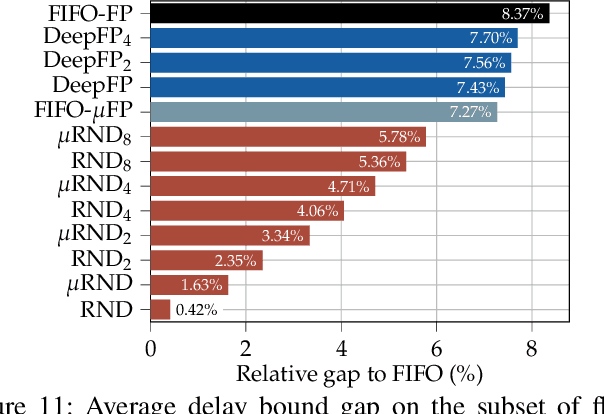
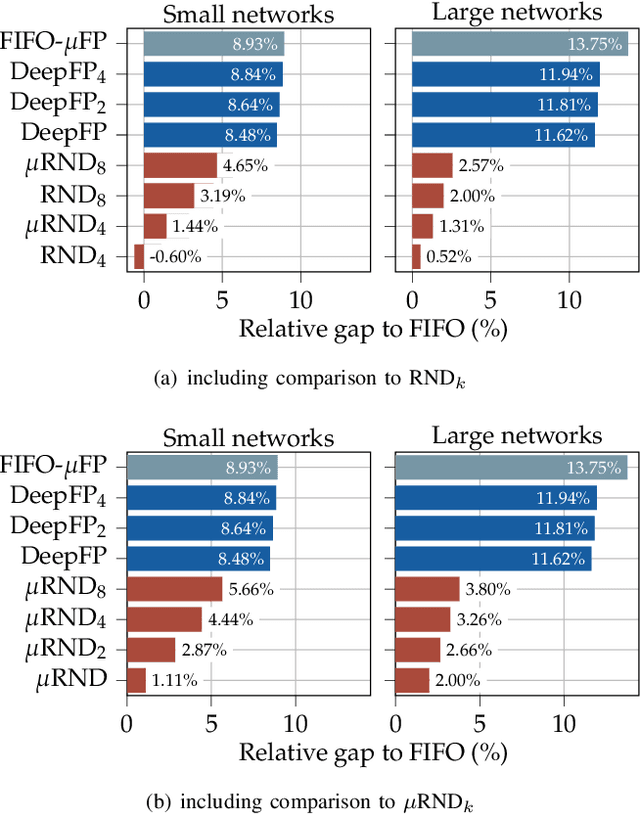
Abstract:The derivation of upper bounds on data flows' worst-case traversal times is an important task in many application areas. For accurate bounds, model simplifications should be avoided even in large networks. Network Calculus (NC) provides a modeling framework and different analyses for delay bounding. We investigate the analysis of feedforward networks where all queues implement First-In First-Out (FIFO) service. Correctly considering the effect of data flows onto each other under FIFO is already a challenging task. Yet, the fastest available NC FIFO analysis suffers from limitations resulting in unnecessarily loose bounds. A feature called Flow Prolongation (FP) has been shown to improve delay bound accuracy significantly. Unfortunately, FP needs to be executed within the NC FIFO analysis very often and each time it creates an exponentially growing set of alternative networks with prolongations. FP therefore does not scale and has been out of reach for the exhaustive analysis of large networks. We introduce DeepFP, an approach to make FP scale by predicting prolongations using machine learning. In our evaluation, we show that DeepFP can improve results in FIFO networks considerably. Compared to the standard NC FIFO analysis, DeepFP reduces delay bounds by 12.1% on average at negligible additional computational cost.
RiskNet: Neural Risk Assessment in Networks of Unreliable Resources
Jan 28, 2022Abstract:We propose a graph neural network (GNN)-based method to predict the distribution of penalties induced by outages in communication networks, where connections are protected by resources shared between working and backup paths. The GNN-based algorithm is trained only with random graphs generated with the Barab\'asi-Albert model. Even though, the obtained test results show that we can precisely model the penalties in a wide range of various existing topologies. GNNs eliminate the need to simulate complex outage scenarios for the network topologies under study. In practice, the whole design operation is limited by 4ms on modern hardware. This way, we can gain as much as over 12,000 times in the speed improvement.
Graph Neural Networks for Communication Networks: Context, Use Cases and Opportunities
Dec 29, 2021
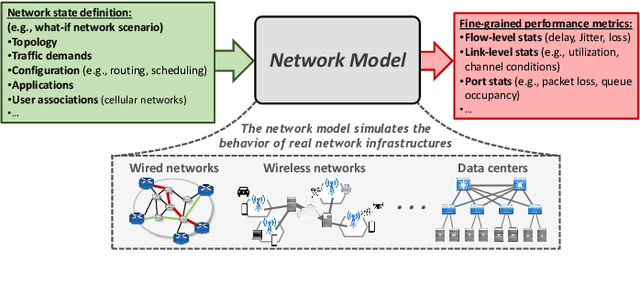
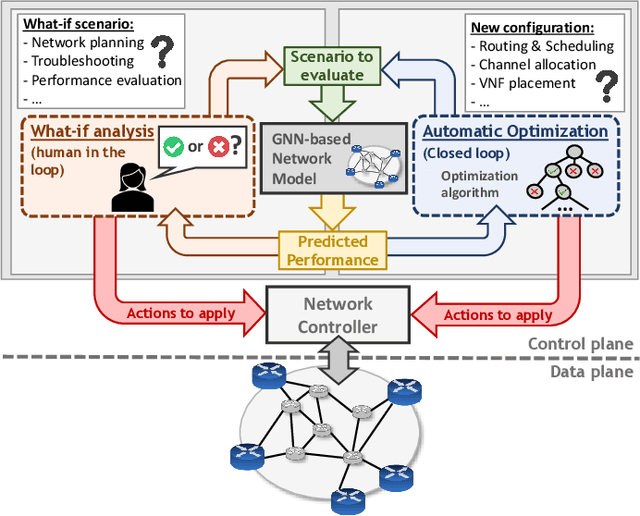
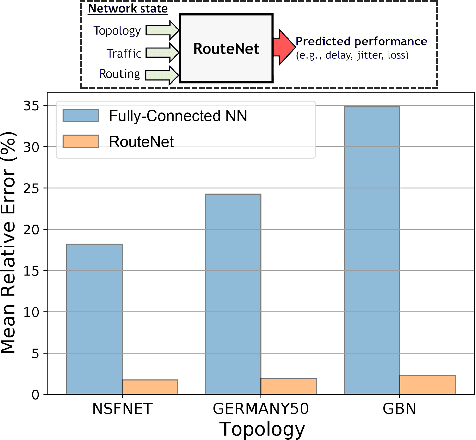
Abstract:Graph neural networks (GNN) have shown outstanding applications in many fields where data is fundamentally represented as graphs (e.g., chemistry, biology, recommendation systems). In this vein, communication networks comprise many fundamental components that are naturally represented in a graph-structured manner (e.g., topology, configurations, traffic flows). This position article presents GNNs as a fundamental tool for modeling, control and management of communication networks. GNNs represent a new generation of data-driven models that can accurately learn and reproduce the complex behaviors behind real networks. As a result, such models can be applied to a wide variety of networking use cases, such as planning, online optimization, or troubleshooting. The main advantage of GNNs over traditional neural networks lies in its unprecedented generalization capabilities when applied to other networks and configurations unseen during training, which is a critical feature for achieving practical data-driven solutions for networking. This article comprises a brief tutorial on GNNs and their possible applications to communication networks. To showcase the potential of this technology, we present two use cases with state-of-the-art GNN models respectively applied to wired and wireless networks. Lastly, we delve into the key open challenges and opportunities yet to be explored in this novel research area.
On the Robustness of Deep Learning-predicted Contention Models for Network Calculus
Nov 24, 2019
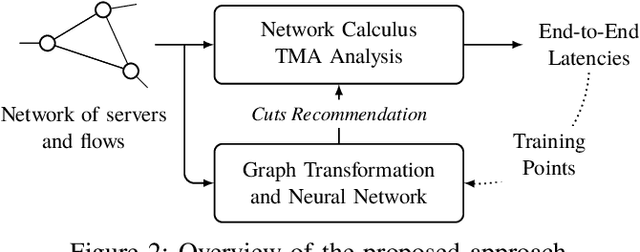

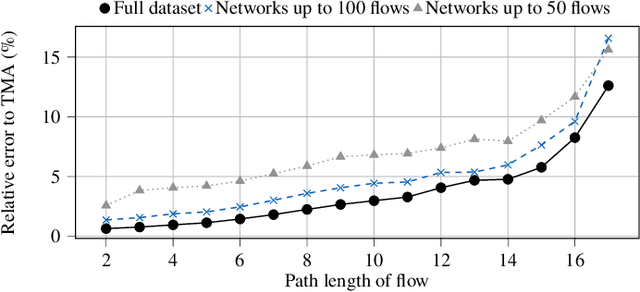
Abstract:The network calculus (NC) analysis takes a simple model consisting of a network of schedulers and data flows crossing them. A number of analysis "building blocks" can then be applied to capture the model without imposing pessimistic assumptions like self-contention on tandems of servers. Yet, adding pessimism cannot always be avoided. To compute the best bound on a single flow's end-to-end delay thus boils down to finding the least pessimistic contention models for all tandems of schedulers in the network - and an exhaustive search can easily become a very resource intensive task. The literature proposes a promising solution to this dilemma: a heuristic making use of machine learning (ML) predictions inside the NC analysis. While results of this work are promising in terms of delay bound quality and computational effort, there is little to no insight on why a prediction is made or if the trained machine can achieve similarly striking results in networks vastly differing from its training data. In this paper we address these pending questions. We evaluate the influence of the training data and its features on accuracy, impact and scalability. Additionally, we contribute an extension of the method by predicting the best $n$ contention model alternatives in order to achieve increased robustness for its application outside the training data. Our numerical evaluation shows that good accuracy can still be achieved on large networks although we restrict the training to networks that are two orders of magnitude smaller.
 Add to Chrome
Add to Chrome Add to Firefox
Add to Firefox Add to Edge
Add to Edge